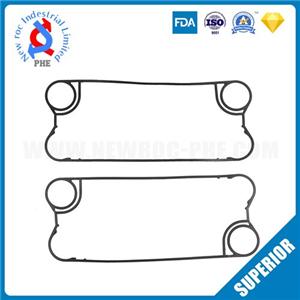Anti-corrosion method of plate heat exchanger
The anti-corrosion problem of plate heat exchangers has been widely concerned by users. There are various anti-corrosion methods. Knowing the reasons for various corrosion of plate heat exchangers, choosing the steps of anti-corrosion reasonably, can achieve the policy of efficient use of equipment. Regardless of the corrosion situation, the following anti-corrosion methods for plate heat exchangers are proposed, let's take a look
1. Corrosion-resistant materials
The plate heat exchanger of the pressure isolation station adopts corrosion-resistant heat exchanger plate materials (such as binocular stainless steel, Hastelloy, titanium, titanium alloy, copper, etc.). These materials have strong corrosion resistance and can improve the plate heat exchange of the pressure isolation station. However, these high-corrosion-resistant materials are expensive, high manufacturing costs, and large one-off costs. It is generally difficult for enterprises to accept and promote.
2. add corrosion inhibitor method
In the corrosive medium, a small amount of certain substances are added, and these substances can greatly reduce or even stop the corrosion of the metal heat exchanger plates. These substances are called corrosion inhibitors. The addition of corrosion inhibitor should be based on the principle that it does not affect the production process and product quality of the plate heat exchanger of the pressure isolation station.
According to the reaction mechanism, metal corrosion can be divided into chemical corrosion and electrochemical corrosion. The electrochemical corrosion caused by the electrochemical action of the metal surface and the electrolyte solution is comparative. Electrochemical corrosion usually occurs in the form of local corrosion such as stress corrosion cracking, pitting corrosion (pinhole corrosion), and crevice corrosion.
3. Electrochemical Protection Law
The yang protection method uses an external DC power supply to make the yang on the metal surface become yin and be protected. This method consumes a lot of power, is expensive, and uses less. The positive protection method is to connect the plate heat exchanger of the pressure isolation station to be protected to an external power source, so that a passivation film is formed on the metal surface of the heat exchanger plate to achieve protection. The pressure isolation station plate heat exchanger has low cost, but poor corrosion resistance. The heat of the plate heat exchanger of the pressure isolation station can be increased by using the sacrificial yang protection technology, but the protection effect of this technology is limited to the limited length of the pipe entrance, and it is difficult to realize the yin protection in the deep part of the pipe, so the sacrificial yang protection method is used in the insulation. The application of pressure station plate heat exchanger has been greatly restricted.
Four, anti-corrosion coating method
The metal surface of the heat exchanger plate is covered with a corrosion-resistant paint protection layer through a certain substitution method, and it is in direct contact with the metal surface of the plate heat exchanger of the pressure isolation station and the corrosive medium. This technical method is economical and effective. It was originally used to prevent corrosion in gaseous media. The coatings used by adults are gradually developing in the direction of oil- and solvent-resistant coatings, high-temperature coatings, heavy-duty coatings and coatings for special environments.




